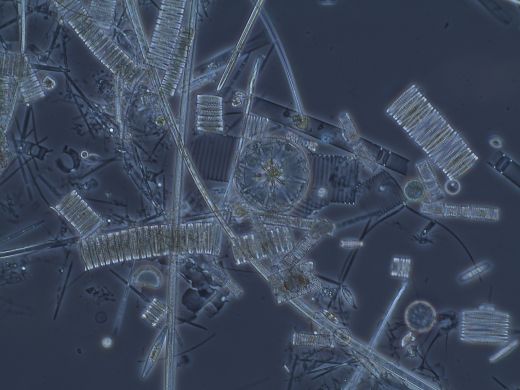
The Southern Ocean was thought to be too dark and low on essential micro-nutrients to sustain plant growth in deep water, but new Institute for Marine and Antarctic Studies (IMAS) research has highlighted that some phytoplankton thrive in its dark depths during summer.
, the study looked at past observations of phytoplankton and new insights from fluorometers mounted on robotic floats, to understand a particular type of phytoplankton that grows deep in the Southern Ocean in summertime.
“Southern Ocean phytoplankton are essential to Antarctic food webs and for regulating global climate through the marine carbon cycle,” IMAS PhD student and lead author Kimberlee Baldry said.
“While deep biomasses of phytoplankton are common in tropical environments, we expect them to be less common in the Southern Ocean.
“However, it seems that phytoplankton have adapted to the dynamic conditions of the Southern Ocean, and deep biomasses are commonly picked up by robotic floats.
“We presume these are from large silica-forming diatoms, which hibernate in sea ice and sediments over winter, before blooming in summer and feeding off intermittent fertilisations of micro-nutrients.
“At the end of the growing season, they sink to the ocean floor, taking carbon and nutrients with them.
“Knowing where these deep diatoms are will enable us to predict where fish, penguins and seals go to feed, and this will contribute to more effective management of fisheries and protection of wildlife.
“Giant diatoms also pre-date humans, and have been regulating global climate for millions of years through mass carbon export events to the deep Southern Ocean seafloor.
“Capturing their biomass and these export events is important for climate forecasting,” Ms Baldry said.
Co-author IMAS Associate Professor Pete Strutton said these large diatoms are not usually observed by satellites, and ship-based sampling may not be able to capture their biomass fully.
“In the context of the Marine Ecosystem Assessment of the Southern Ocean (MEASO), it is important to consider that this phenomenon is missing in our current understanding of Southern Ocean ecology and future climate scenarios,” Associate Professor Strutton said.
“How these deep diatoms influence Southern Ocean ecology will only be revealed through an integrated basin-wide observation system.
“This includes harnessing the detailed information from ship-based sampling, and the increased observational capacity of fluorometers mounted on robotic floats and marine mammals like elephant seals,” he said.
Image: a deep diatom community. Credit: Ruth Eriksen.







